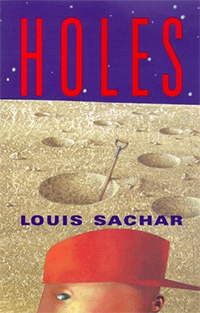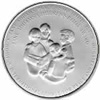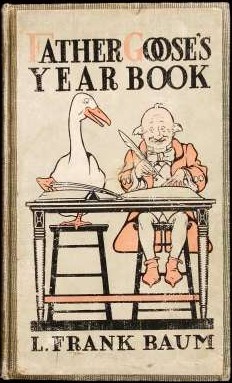
Theodore Sturgeon was an American fiction author of primarily fantasy, science fiction, and horror, as well as a critic. He wrote approximately 400 reviews and more than 120 short stories, 11 novels, and several scripts for Star Trek: The Original Series.

Charles Samuel Addams was an American cartoonist known for his darkly humorous and macabre characters. Some of his recurring characters became known as the Addams Family, and were subsequently popularized through various adaptations.

Laura Jane Addams was an American settlement activist, reformer, social worker, sociologist, public administrator, philosopher, and author. She was a leader in the history of social work and women's suffrage in the United States. Addams co-founded Hull House, one of America's most famous settlement houses, in Chicago, Illinois, providing extensive social services to poor, largely immigrant families. In 1910, Addams was awarded an honorary Master of Arts degree from Yale University, becoming the first woman to receive an honorary degree from the school. In 1920, she was a co-founder of the American Civil Liberties Union (ACLU).

Ernest Banks, nicknamed "Mr. Cub" and "Mr. Sunshine", was an American professional baseball player who starred in Major League Baseball (MLB) as a shortstop and first baseman for the Chicago Cubs between 1953 and 1971. He was inducted into the National Baseball Hall of Fame in 1977, and was named to the Major League Baseball All-Century Team in 1999.

Holes is a 1998 young adult novel written by Louis Sachar and first published by Farrar, Straus and Giroux. The book centers on Stanley Yelnats, who is sent to Camp Green Lake, a correctional boot camp in a desert in Texas, after being falsely accused of theft. The plot explores the history of the area and how the actions of several characters in the past have affected Stanley's life in the present. These interconnecting stories touch on themes such as labor, boyhood and masculinity, friendship, meaning of names, illiteracy, and elements of fairy tales.

Gary James Paulsen was an American writer of children's and young adult fiction, best known for coming-of-age stories about the wilderness. He was the author of more than 200 books and wrote more than 200 magazine articles and short stories, and several plays, all primarily for teenagers. He won the Margaret Edwards Award from the American Library Association in 1997 for his lifetime contribution in writing for teens.
Dennis Joseph Enright OBE FRSL was a British academic, poet, novelist and critic. He authored Academic Year (1955), Memoirs of a Mendicant Professor (1969) and a wide range of essays, reviews, anthologies, children's books and poems.

Jack Barry was an American game show host, television personality and executive who made a name for himself in the game show field. Barry served as host of several game shows in his career, many of which he developed along with Dan Enright as part of their joint operation Barry & Enright Productions.

Malcolm Boyd was an American Episcopal priest and author. He was active in the Civil Rights Movement as one of the Freedom Riders in 1961 and as a minister. Boyd was also active in the anti-Vietnam War movement. In 1977, Boyd "came out", revealing that he was homosexual and becoming a spokesman for gay rights.
Theodore Langhans Taylor was an American author of more than 50 fiction and non-fiction books for young adult readers, including The Cay, The Weirdo, Timothy of the Cay, and The Bomb.
Ergilio Pedro Hato, also known as Pantera Negra, was a goalkeeper from Curaçao in the former Netherlands Antilles. He was well known in the Caribbean and his reputation achieved beyond the boundaries of the region. He received offers to large teams including Ajax Amsterdam, Feyenoord Rotterdam and Real Madrid Club de Fútbol. However, he turned down the offers because he chose not to play professionally.

Elizabeth Wright Enright Gillham was an American writer of children's books, an illustrator, writer of short stories for adults, literary critic and teacher of creative writing. Perhaps best known as the Newbery Medal-winning author of Thimble Summer (1938) and the Newbery runner-up Gone-Away Lake (1957), she also wrote the popular Melendy quartet. A Newbery Medal laureate and a multiple winner of the O. Henry Award, her short stories and articles for adults appeared in many popular magazines and have been reprinted in anthologies and textbooks.

The Jane Addams Children's Book Award is given annually to a children's book published the preceding year that advances the causes of peace and social equality. The awards have been presented annually since 1953. They were previously given jointly by the Women's International League for Peace and Freedom (WILPF) and the Jane Addams Peace Association, but are now presented solely by the Jane Addams Peace Association.

The Lottie Project is a children's novel by English author Jacqueline Wilson. It is illustrated by Nick Sharratt. The book is different from most Jaqueline Wilson books, as they are mostly told by characters who are not popular in school and are usually bullied by the popular students.

Eleanor and Franklin is a 1976 American television miniseries starring Edward Herrmann as Franklin D. Roosevelt (FDR) and Jane Alexander as Eleanor Roosevelt which was broadcast on ABC on January 11 and 12, 1976. It is the first part in a two-part "biopic" miniseries based on Joseph P. Lash's biography and history from 1971, Eleanor and Franklin, based on their correspondence and recently opened archives. Joseph Lash was Eleanor's personal secretary and confidant. He wrote several books on the Roosevelts including some on both Eleanor and Franklin individually and was also a controversial activist in his own right in leftist, liberalism, social and labor issues of the era.

Timothy of the Cay is a book written by Theodore Taylor. It is a prequel for Timothy and a sequel for Phillip to the 1969 novel The Cay.

Father Goose's Year Book: Quaint Quacks and Feathered Shafts for Mature Children is a collection of humorous nonsense poetry written by L. Frank Baum, author of the Oz books. It was published in 1907.
The Cay is an American television film based on the 1969 book of the same name. It was released on October 21, 1974.

Getting Away with Murder: The True Story of the Emmett Till Case is a 2003 young adult non-fiction book by American author Chris Crowe. The book details the history of Emmett Till, a teenaged African-American boy, who was abducted and murdered after offending a white woman at a grocery store. The book was positively received and won an American Library Association award for Best Book for Young Adults in 2004 and the Jane Addams Peace Association Honor Book Award for Older Children.
Nicholas Wright Gillham was an American geneticist who served as the James B. Duke Professor of Biology at Duke University. In addition to his scientific research, he is known for his 2001 biography of Francis Galton, A Life of Sir Francis Galton: From African Exploration to the Birth of Eugenics.














